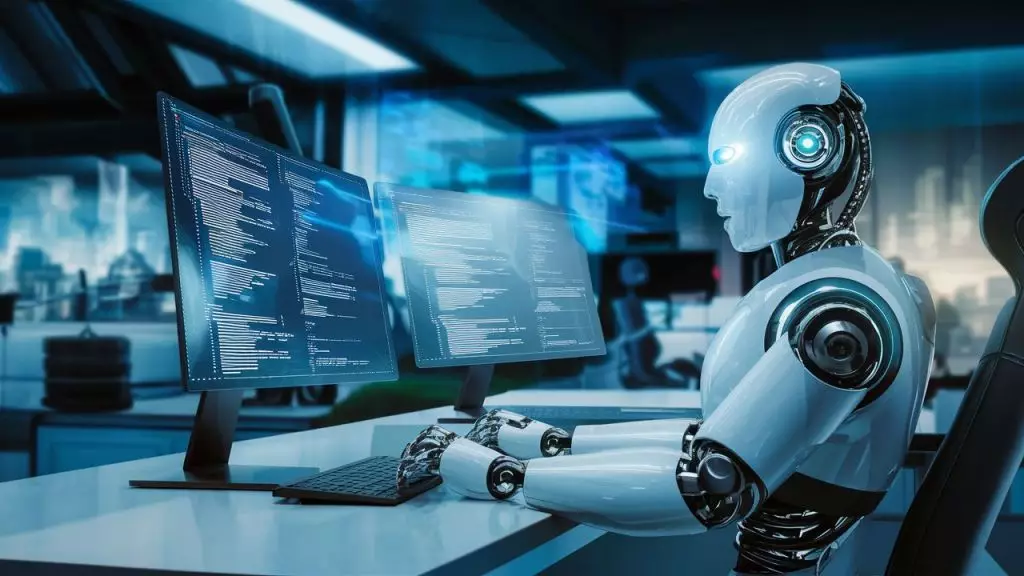In the ever-evolving landscape of artificial intelligence, the recent introduction of DeepCoder-14B by Together AI and Agentica marks a significant milestone. This new coding model not only exhibits exceptional capabilities that rival industry leaders, like OpenAI’s o3-mini, but also embodies the principle of open-source collaboration, allowing the tech community to thrive collectively. By providing not only the model but also its training data, code, logs, and system optimizations, the developers have set a precedent that could revolutionize the way AI models are built and improved upon in the future.
The importance of open-sourcing a highly effective AI model cannot be overstated. It democratizes access to advanced AI technology, enabling researchers, developers, and enthusiasts alike to learn from and build upon the work done by experts. This collaborative environment fosters innovation—not merely duplication—encouraging a culture where advancements come through community efforts rather than isolated corporate interests. In essence, DeepCoder-14B serves as a vessel for collective growth and knowledge-sharing.
Performance Metrics That Matter
DeepCoder-14B’s performance in coding benchmarks such as LiveCodeBench, Codeforces, and HumanEval+ is another noteworthy aspect of this model. With results demonstrating performance in line with leading competitors, the researchers have tapped into an essential market need: high-quality coding tools that are both effective and accessible. The fact that it achieves these results with only 14 billion parameters speaks to the model’s efficiency; smaller size often means easier deployment and less demanding hardware requirements.
Most significantly, DeepCoder-14B has transcended its coding specificities by excelling in mathematical reasoning, as evidenced by its 73.8% score on the AIME 2024 benchmark. This crossover capability highlights a vital shift in how we view the challenges inherent in AI development. It suggests that learning derived from one domain—like coding—can be effectively applied to another domain—like mathematics. Such versatility is not just a novelty; it’s a pathway to building AI models with broader applicability.
Navigating Challenges with Innovation
One of the prevalent hurdles in training AI models has been data curation, particularly in specialized fields like coding. Unlike academic subjects with abundant high-quality datasets, coding suffers from a lack of verified data. DeepCoder’s team has addressed this through meticulous data filtering processes, curating 24,000 quality coding problems. The structured approach to enhancing data quality not only sets a standard for future models but also highlights a critical lesson: the path to excellent output begins with excellent input.
Moreover, the use of reinforcement learning (RL) in model training magnifies this effort. While RL can be computationally intensive, the incorporation of an effective reward mechanism ensures that the model learns useful patterns without falling into traps like overfitting or memorization. This focus on reliable outcomes ensures that generated code isn’t merely functional but also well-structured and optimized.
Innovations in Model Training and Performance
The training methodology of DeepCoder-14B showcases how innovative strategies can significantly enhance model performance. Techniques like Group Relative Policy Optimization (GRPO) and iterative context window training demonstrate the researchers’ commitment to continuous improvement. By gradually extending the model’s context capabilities—from 16K to a staggering 64K tokens—the team has paved the way for more comprehensive and nuanced reasoning and problem-solving abilities.
The introduction of the verl-pipeline—an optimized extension for the traditional reinforcement learning workflow—propels this innovation further. Reducing bottlenecks and idle time ensures that the model can be trained more efficiently, cutting down the process to a mere 2.5 weeks. Open-sourcing such innovations creates additional avenues for researchers and developers to engage, adapt, and refine methodologies for their projects, thereby accelerating AI advancement.
An Inclusive Future for AI Development
As we look toward the future, the implications of DeepCoder-14B extend beyond just performance metrics or training methodologies. The shift toward accessible, high-performing models means businesses of all sizes can adopt advanced AI capabilities without relying solely on large tech corporations. This democratization of technology fosters better competition and opens opportunities for smaller organizations to innovate, transitively benefiting the entire tech ecosystem.
DeepCoder-14B not only emphasizes the importance of collaboration and accessibility but also implicitly encourages the establishment of ethical standards for developing AI technologies. By sharing their insights and creations, the researchers at Together AI and Agentica are not just contributing to an existing body of knowledge; they are reshaping the future of AI development as a whole. The commitment to transparency serves as an invitation for greater societal engagement, ensuring that AI evolves with thoughtful consideration for its impact on workers and industries.
In the end, DeepCoder-14B stands not just as a remarkable coding tool, but as a beacon for what the future of AI could look like: efficient, inclusive, and fundamentally collaborative.

